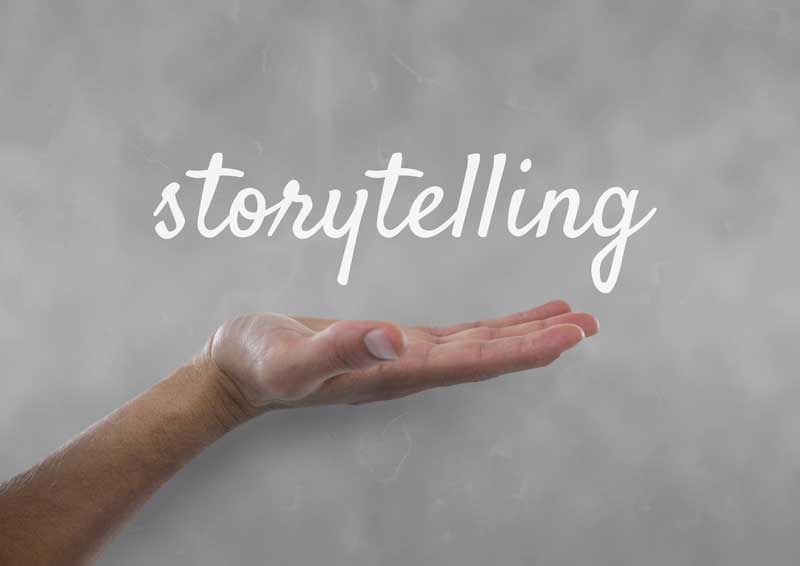Think back to the first time a story truly grabbed your attention. For many, childhood books sparked that first connection to the magic of storytelling. Beyond entertainment, stories have always had a deeper purpose. They connect, persuade, and influence in ways that plain facts cannot. In marketing, leadership, and even daily life, storytelling has become one of the most powerful tools we can use to inspire action and build trust.

Why Stories Matter
Stories are more than just entertainment. They allow us to explore new worlds while making sense of our own experiences. Research shows facts are far more likely to be remembered when they are part of a story rather than presented in isolation.
Psychological studies reveal that when we listen to a story, our brain waves often synchronize with the storyteller’s. This synchronization creates connection and understanding on a deeper level. In fact, stories have been proven to affect behavior, inspiring people to make lifestyle changes when they see relatable characters doing the same.
Stories, then, go beyond mere words. They connect people, shape beliefs, and influence decisions. That’s why understanding how to tell a good story is key for marketers, leaders, and anyone seeking to inspire action.
The Three Keys to Better Storytelling
- Understand the Problem and the Pursuit
One of the most common mistakes in storytelling is jumping in too soon. Before telling a story, it’s essential to understand your audience. What challenges are they facing now? Where do they want to be in the future? This balance of problem and pursuit provides the foundation of a powerful story.
Business expert Liz J. Simpson illustrates this principle in her messaging. She carefully listens to her clients, understands their challenges, and reflects their words back through her content. As a result, her audience feels heard and understood. This reinforces one of the golden rules of storytelling: good story listening must come before good storytelling.
- Paint a Vivid Picture
Once the problem and pursuit are clear, it’s time to paint a picture your audience can see and feel. The more specific the details, the easier it is for your audience to relate. This doesn’t mean your story has to be long—it just needs to include specific people, challenges, and imagery.
Nike, for instance, doesn’t need to show endless close-ups of shoes in its campaigns. Instead, by telling stories around athletes like LeBron James, they represent relatable challenges, emotions, and victories. By connecting with those moments of perseverance and success, audiences naturally associate themselves with the brand’s mission and products.
When you paint a picture through your words, your audience will not only remember your message but also feel like they are part of the story.
- Make the Proposal
At its heart, every story leads to a proposal—a moment where you invite your audience to take action. This could mean buying a product, signing up for a service, or joining a cause. But as with proposals in real life, the timing and delivery matter.
Consider the difference between a thoughtful marriage proposal that comes at the right moment and one made too soon. In marketing, the same rule applies. Propose too early, and rejection is likely. When stories are used effectively, they build trust and connection before the ask, making the proposal a natural next step.
Author Gary Vaynerchuk describes this as “give before you ask.” Stories serve as those moments of giving—providing value, understanding, and connection before introducing an offer. When done authentically, stories transform proposals into opportunities that feel irresistible.
Why Stories Work So Well
Stories are powerful because they embed human elements into business and leadership. They slow down the process of persuasion in just the right way, allowing connection and trust to grow. When the moment comes to propose, the audience is often already aligned and ready.
This makes stories more than communication tools—they become the connective tissue between challenges and solutions, between brands and communities, between people and their goals.
Personal Stories Add Meaning
The best stories often come from our own experiences. Moments of failure, victory, or lesson-learning help create details that audiences relate to. These stories don’t just inspire action; they open doors to deeper connections and community.
Whether in leadership, marketing, or personal growth, stories give us the chance to connect authentically and guide others toward outcomes they deeply desire.
Conclusion
Storytelling is more than an art—it’s a strategy that transforms how people remember, connect, and respond. By understanding your audience’s problem and pursuit, painting a vivid picture, and making the right proposal, you unlock one of the most persuasive tools you can use.
Stories don’t just influence decisions; they shape relationships, inspire communities, and leave a lasting impact. When told well, they are not just heard but felt, remembered, and acted upon.





